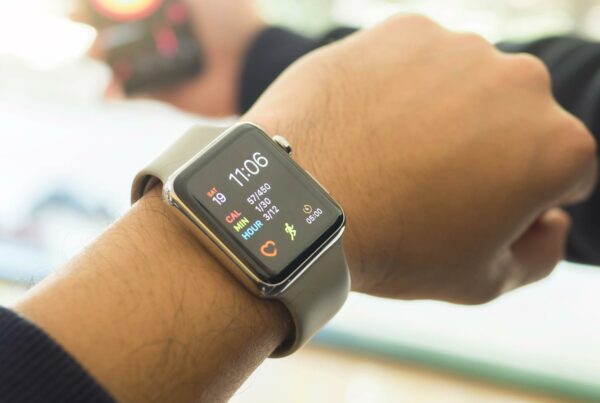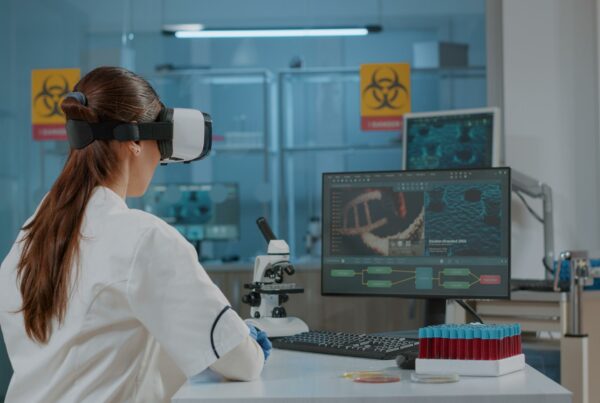Healthcare interoperability is the electronic exchange of patient data via the Electronic Health Record (EHR) systems of various providers. The challenges surrounding healthcare interoperability have assumed greater importance since the 2016 Cures Act. Signed by President Obama, the act requires EHR systems to have APIs that facilitate easy data exchange. Providers must keep their data “liquid” and available to all stakeholders. Practices with non-liquid data may be deemed “information blockers” and face up to $1 million in civil fines.
On the one hand, health providers must keep sensitive health data private and adhere to privacy laws. On the other, they should be able to provide access to data when needed or risk penalties. While data privacy and healthcare interoperability may seem at odds with one another, they must work together to ensure patient data is accessible and secure.
Towards Interoperable Healthcare Systems
As the world’s population ages and people live longer, healthcare interoperability and data exchange will be crucial. Interoperability issues can result in poor health outcomes and higher costs.
The National Center for Biotechnology Information estimates that one in four U.S. adults has two or more chronic conditions [1]. Chronic disease treatment accounts for 66% of US healthcare costs[2]. The state needs medical history to help these people. Moreover, EHR use has grown rapidly in the US, according to the Office of the National Coordinator for Health Information Technology (ONC).
Many hospitals get medical records and patient data from other providers, but less than half integrate this information into patient records. Thus, though access to vital clinical data has expanded, more effort is needed to bring stakeholders together to create an integrated data ecosystem.
Challenges to Healthcare Interoperability
The importance of interoperability cannot be overstated, but achieving it presents key challenges.
Data management
Healthcare IT providers serving large health networks struggle with inconsistent data. Health IT professionals spend hours searching for data stored by providers in several locations. Healthcare interoperability requires handling EHR/EMR data, IoT data, internal hospital systems, and more. They may disrupt your procedures if not addressed quickly.
The correct data integration technologies and healthcare analytics solutions may help improve interoperability and develop strong coordination across various organizations, regulators, and leaders. A single network and interface also provide the framework for a standardized EHR network. Automating data extraction from several silos helps establish a consistent dataset.
Resistance to data sharing
Certain stakeholders in the healthcare business have a strong interest in preventing data exchange with other providers. Hospital systems, for example, compete for patients with urgent care clinics.
When an urgent care clinic requests patient data from a hospital’s EHR system, the motive to release the data is minimal at best. However, the legislation requires that health data be transparent and accessible across organizational boundaries and to patients.
Lack of skill
Building an interoperable healthcare system is no easy task. Most healthcare workers lack the time and expertise to prioritize this task. However, hiring EHR interoperability experts can prove expensive, especially for smaller firms.
Interoperability is also hampered by a lack of training among current workers. Generally, healthcare practitioners are skeptical of new solutions, making adoption rates fairly low. Stakeholders must invest in workforce upskilling at all levels to streamline processes and ensure everyone uses interoperable solutions.
Budget constraints
Interoperability can only be achieved if all clinicians, insurers, and government agencies work together. However, many medical facilities lack the financial means to make the necessary improvements. Healthcare interoperability necessitates early investments that are beyond the budgets of many clinics, even though it provides significant savings in the long run.
Organizations should check whether they are eligible for government funds to modernize their health record systems. Many cloud vendors also provide pay-as-you-go payment models, which may make technical costs more affordable and predictable.
Lack of standardization
Standard record formats like FHIR and HL7 are becoming more widespread, and new regulations require EHR vendors to provide APIs that aid interoperability. However, many healthcare providers and systems still use customized EHR systems that are challenging to convert to a standard format and share. Clinics may also have difficulty implementing interoperability standards because they have different rules for information exchange.
Many organizations have customized data based on their service and location. Healthcare businesses with legacy systems face the additional challenge of modernizing to satisfy interoperability criteria. Organizations can integrate and customize this data using a hybrid cloud platform that links internal and external systems. It would also extract data from legacy systems, make it more accessible for modern applications, and enable companies to keep data flowing.
Balancing security and consent
With the rising frequency of cybersecurity assaults on healthcare systems, healthcare organizations may find it difficult to combine the requirement for health information to be available with the need to safeguard sensitive information and maintain patient privacy.
By constructing digital health systems in which health information freely flows from provider to provider, it is not always apparent when and to what extent patients’ consent is required. Healthcare institutions are hesitant about sharing information and tend to err on the side of caution.
Benefits of Interoperable Healthcare Systems
Interoperability in healthcare has a lot to offer all parties and is a game changer that benefits everyone in the industry.
Patients
Health information and treatment techniques in interoperable healthcare systems enhance patient care. They save patients from explaining their ailments and treatments to several doctors.
Physicians
Clinicians have access to all patient data thanks to healthcare interoperability. This accelerates diagnosis, avoids unnecessary medical procedures, and decreases practitioner stress.
Administrative staff
Data automation is your strongest defense against costly medical errors. Personnel can avoid manual information sharing. Appointment scheduling and medical billing also become error-free with automated exchanges.
Pharmacies
Rx transfer is also a component of healthcare interoperability. Pharmacies can improve their productivity by obtaining e-prescriptions from physicians and monitoring which drugs are administered to patients.
Insurers
Early detection using interoperable technologies reduces adverse event costs for insurers. Avoiding needless testing and treatments saves insurance companies money.
Thus, healthcare interoperability benefits everyone in the healthcare ecosystem.
The Future of Interoperability in Healthcare
Thanks to FHIR and HIMSS interoperability initiatives, providers want to use shared data to improve patient experiences. However, implementation challenges remain. Some suppliers struggle with safe data transfer, while others are unsure how to standardize interoperability.
In the short term, stakeholders hope to solve these challenges by embracing new interoperable healthcare technologies. Furthermore, it is critical to understand that only a certain level of interoperability can be achieved with existing healthcare IT architecture and systems. Higher levels may necessitate innovation and additional developments in patient-centered technology.
With improved healthcare interoperability, companies can cease thinking of individuals as patients one day, health plan members the next, and health app users the next. Instead, industry leaders will study how people access and use health information, regardless of source, to improve care models, patient safety, and patient experiences. As APIs, AI-driven technologies, and blockchain enter the fray, healthcare interoperability is set to achieve new highs.
References
- Raghupathi, Wullianallur, and Viju Raghupathi. “An Empirical Study of Chronic Diseases in the United States: A Visual Analytics Approach to Public Health.” PubMed Central (PMC), March 1, 2018. https://www.ncbi.nlm.nih.gov/pmc/articles/PMC5876976/
- Advancing Patient-Centered Care for People Living With Multiple Chronic Conditions | Agency for Healthcare Research and Quality. “Multiple Chronic Conditions.” Accessed January 19, 2023. https://www.ahrq.gov/patient-safety/settings/long-term-care/resource/multichronic/mcc.html














